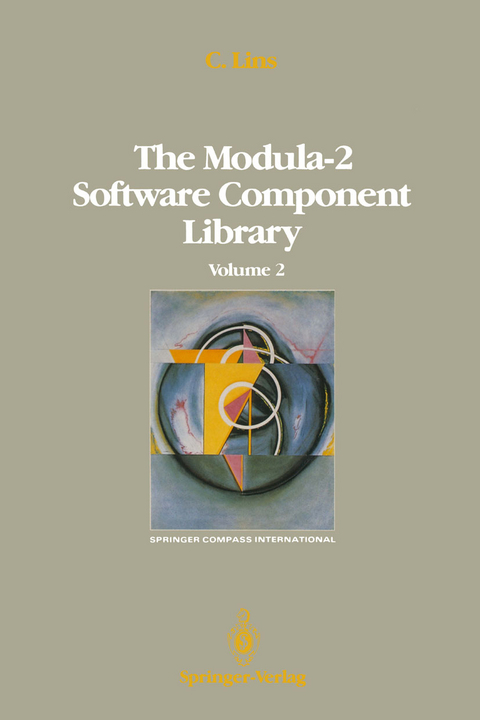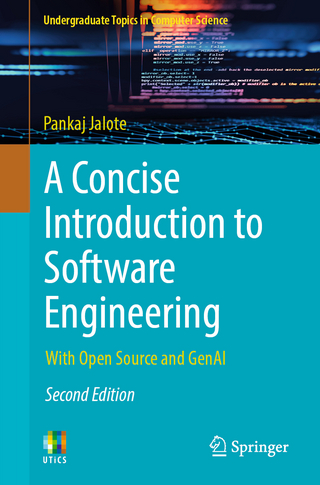
The Modula-2 Software Component Library
Springer-Verlag New York Inc.
978-1-4684-6398-9 (ISBN)
Volume 2 Table of Contents.- 0 Introduction to Volume 2.- 1 Specification.- 1.1 Specification of Procedure Abstractions.- 1.2 Specifying Data Abstractions.- 1.3 Special Symbols.- References.- 2 Module Guide.- 2.1 Purpose.- 2.2 Lists.- 2.3 Queues.- 2.4 Deques.- 2.5 Module Names 23 References.- 3 The List Abstraction.- 3.1 Lists: Concept and Definitions.- 3.2 Selected Summary of List Applications and Uses.- 3.3 List Constructor Operations.- 3.4 List Selector Operations.- 3.5 List Exceptions.- 3.6 Summary.- References.- 4 Singly-Linked Unbounded List.- 4.1 List Enumerations.- 4.2 Singly-Linked Unbounded List Interface.- 4.3 Singly-Linked Unbounded List Implementation.- References.- 5 The Doubly-Linked Unbounded List.- 5.1 Doubly-Linked Unbounded List Interface.- 5.2 Doubly-Linked Unbounded List Implementation.- References.- 6 The Singly-Linked Bounded List.- 6.1 Singly-Linked Bounded List Interface.- 6.2 Singly-Linked Bounded List Implementation.- References.- 7 The Doubly-Linked Bounded List.- 7.1 Doubly-Linked Bounded List Interface.- 7.2 Doubly-Linked Bounded List Implementation.- References.- 8 List Utilities.- 8.1 Sequential Search Utilities — Interface.- 8.2 Sequential Search Utilities — Implementation.- 8.3 List Utilities — Interface.- 8.4 List Utilités — Implementation.- References.- 9 The Queue and Deque Abstractions.- 9.1 Queues and Deques: Concept and Definitions.- 9.2 Summary of Queue/Deque Applications and Uses.- 9.3 Queue Constructor Operations.- 9.4 Queue Selector Operations.- 9.5 Queue Iterator Operations.- 9.6 Deque Operations.- 9.7 Priority Queue/Deque Operations.- 9.8 Balking Queue/Deque Operations.- 9.9 Queue/Deque Exceptions.- 9.10 Summary.- References.- 10 The Bounded Queue.- 10.1 Queue Enumerations.- 10.2 Bounded Queue Interface.- 10.3Bounded Queue Implementation.- 10.4 The Bounded Balking Queue.- References.- 11 The Unbounded Queue.- 11.1 Unbounded Queue Interface.- 11.2 Unbounded Queue Implementation.- 11.3 The Unbounded Balking Queue.- References.- 12 The Bounded Priority Queue.- 12.1 Bounded Balking Priority Queue Interface.- 12.2 Bounded Balking Priority Queue Implementation.- 12.3 Bounded Priority Queue Implementation Using Heaps.- References.- 13 The Unbounded Priority Queue.- 13.1 Unbounded Balking Priority Queue Interface.- 13.2 Unbounded Balking Priority Queue Implementation.- References.- 14 The Bounded Deque.- 14.1 Bounded Deque Interface.- 14.2 Bounded Deque Implementation.- 14.3 The Balking Bounded Deque.- References.- 15 The Unbounded Deque.- 15.1 Unbounded Deque Interface.- 15.2 Unbounded Deque Implementation.- 15.2.6 Module Initialization.- 15.3 Unbounded Balking Deque Implementation.- References.- 16 The Bounded Priority Deque.- 16.1 Bounded Priority Deque Interface.- 16.2 Bounded Priority Deque Implementation.- References.- 17 The Unbounded Priority Balking Deque.- 17.1 Unbounded Priority Balking Deque Interface.- 17.2 Unbounded Priority Balking Deque Implementation.- References.- Appendices.- A Modula-2 Syntax Diagrams.- B Module Import Graph Diagrams.- C Module Index.
| Reihe/Serie | Springer Compass International |
|---|---|
| Zusatzinfo | XVII, 371 p. |
| Verlagsort | New York, NY |
| Sprache | englisch |
| Maße | 152 x 229 mm |
| Themenwelt | Mathematik / Informatik ► Informatik ► Programmiersprachen / -werkzeuge |
| Mathematik / Informatik ► Informatik ► Software Entwicklung | |
| Informatik ► Theorie / Studium ► Compilerbau | |
| ISBN-10 | 1-4684-6398-5 / 1468463985 |
| ISBN-13 | 978-1-4684-6398-9 / 9781468463989 |
| Zustand | Neuware |
| Informationen gemäß Produktsicherheitsverordnung (GPSR) | |
| Haben Sie eine Frage zum Produkt? |
aus dem Bereich


